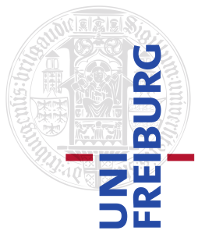Final Trial Exam
You can have a look at your exam (Klausureinsicht) on Wednesday, March 31, 2 - 3 pm in building 51, second floor, room 28.
On March 12, 14 - 16.30 h we had the final exam in HS 00-026 in building 101.
Here is a PDF of the final exam.
Here are the solutions for the final exam (not proof-read yet).
The final exam contributed to the overall mark for the course as follows. Let ME1 be the mark for the first half of the exercises (1 - 8). Let ME2 be the mark for the second half of the exercises (9 - 14). Let MEX be the mark for the final exam. Let MEX' = MEX if MEX was better than ME2 and the mark closest to(ME2+MEX)/2 otherwise. Then the overall mark for the course is 25% * ME1 + 75% * MEX', but at most one full mark better then MEX.
Results
21 people participated in this exam. There were six tasks, each worth 10 points. Out of these six tasks you could choose five. If you would do all six tasks, we would select those five where you got the most points. The maximal number of points to reach was therefore 50. With 24 points you pass. The detailed assignment of points to grades was set as follows (after the exam):
47 - 50 points |
1.0 |
44 - 46 points |
1.3 |
41 - 43 points |
1.7 |
38 - 40 points |
2.0 |
35 - 37 points |
2.3 |
32 - 34 points |
2.7 |
30 - 31 points |
3.0 |
28 - 29 points |
3.3 |
26 - 27 points |
3.7 |
24 - 25 points |
4.0 |
< 24 points |
5.0 (failed) |
The marks achieved by the 21 participants were: 1.0 x 1, 1.3 x 4, 1.7 x 1, 2.3 x 5, 2.7 x 3, 3.0 x 1, 3.3 x 2, 3.7 x 1, 4.0 x 2, 5.0 x 1. You find your marks on your personal page, where you used to upload your solutions:
These were the rules of the final exam (the same as for the mid-term exam)
1. It's an open book exam, that is, you can bring and use any amount of books, papers, etc. In particular, printout of the lecture slides, exercise sheets, your solutions, etc. Also any amount of private annotations and the whole CS library if you want. You won't need much for the exam though. I think what will be most useful are the slides, so that you can look up the basic definitions of stuff, in case you forgot them, and your solutions of the exercise sheets.
2. You are not allowed to use any computing devices, mobile phones, etc. In particular, you are not allowed to communicate with others or in any way connect to the Internet or something like that. You won't need a pocket calculator. In case you need to compute log_2(10/7), we will tell you what it is. Things like 2 * 0.5 or log_2(10/5) you should be able to compute by yourself.
3. Expect one or two tasks where you have to write code for some small functions. For example, a binary search in a list of strings. (No, that will not be a task of this exam.) You can use any of the standard languages: Java, C++, C#. Python and PHP are also ok if you absolutely must. Or you can also use pseudo-code. Anyway, you will be asked to write only relatively simple functions, which do not require any involved language-specific things. You should know basic data structures like arrays, lists, and hash tables though.
4. The material covered is simply everything that we did in the lectures and in the exercises, and nothing beyond that. Note that if you haven't really understood a topic, and then comes a task about that topic, you won't have enough time to go to the slides, understand it, and then solve the task. That is, you should have a basic understanding of everything we did, before the exam. If you did all the exercises, and did them well, chances are high that you have that understanding.
5. The exam questions will be significantly easier than most of the questions in the exercises. And this is how it should be if you ask me. For the exercise you have time to think deep about certain problems, deal with the gory details of things, etc. and this is how one learns / understands stuff. In the exam, you should prove that you have understood all the stuff we did, no more and no less. There will, of course, be tasks that require some thinking, but no deep thinking. In particular, you won't have to prove that P != NP, or that Primes is in P.
These were the questions and comments about the final exam
TODO: copy from main page, once discussion is done there.
